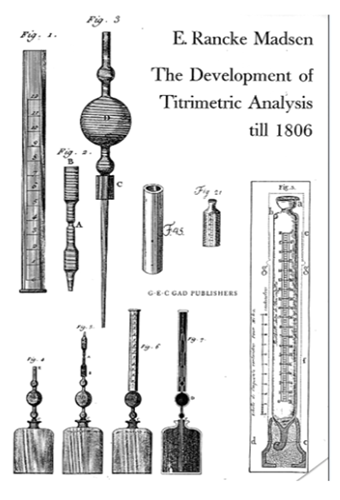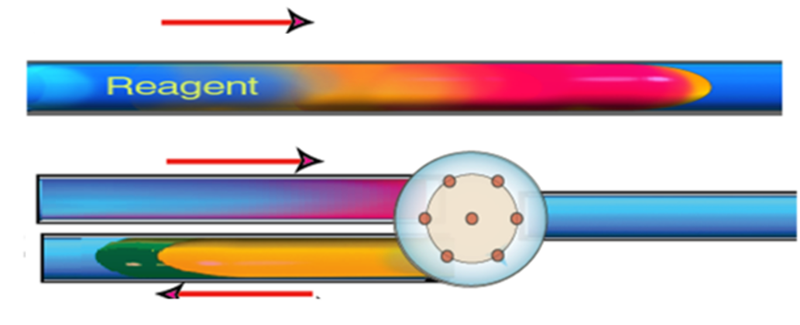From batch to flow analysis
Solution handling is one of the most frequently performed laboratory tasks. In the analytical laboratory, it is also the most exacting and laborious one, because solutions must be precisely metered, mixed, incubated, heated, separated, and monitored in a reproducible way, by spectroscopy or by other means for quantification of the target analyte. A significant number of chemical assays worldwide are still carried out manually, by means of volumetric glassware, function of which has not changed for 200 years.
Automation of reagent based chemical analysis has been implemented whenever many samples must be processed, or when continuous monitoring is desired. Downscaling of automated assays is the current trend, as it decreases sample and reagent consumption and waste generation. Processing smaller volumes of chemically or biologically hazardous materials within a closed system improves laboratory safety.
 There are two approaches to automated solution handling, batch or flow processing. For the practicing analyst, this is a choice between the mechanical complexity of a dedicated system, or the versatility of a system with few mechanical parts. In the batch processing mode, each sample is assigned an individual container (such as a vial or microwell) in which reactants are pipetted, mixed, incubated, and transported to a detector. Therefore, a discrete (batch) analyzer has many complex mechanical parts. Its main advantage is that samples can be processed in parallel, and therefore, sampling frequency is virtually independent of the rate of chemical reactions involved. Thus, high throughput screening, needed in drug discovery, is exclusively carried out in parallel, within a microwell format.
There are two approaches to automated solution handling, batch or flow processing. For the practicing analyst, this is a choice between the mechanical complexity of a dedicated system, or the versatility of a system with few mechanical parts. In the batch processing mode, each sample is assigned an individual container (such as a vial or microwell) in which reactants are pipetted, mixed, incubated, and transported to a detector. Therefore, a discrete (batch) analyzer has many complex mechanical parts. Its main advantage is that samples can be processed in parallel, and therefore, sampling frequency is virtually independent of the rate of chemical reactions involved. Thus, high throughput screening, needed in drug discovery, is exclusively carried out in parallel, within a microwell format.

Flow processing is characterized by its versatility and ease of automation, as the apparatus often comprises only two mechanical components, a pump and a valve. Sample is metered into a working channel by an injection valve and is transported through all steps of an analytical protocol by a flowing stream into a flow cell where transition response, in form of a peak, allows quantification of an analyte. This tutorial is designed to provide overview of principles, applications, and recent advances in Flow Injection Analysis and Sequential Injection Chromatography.
